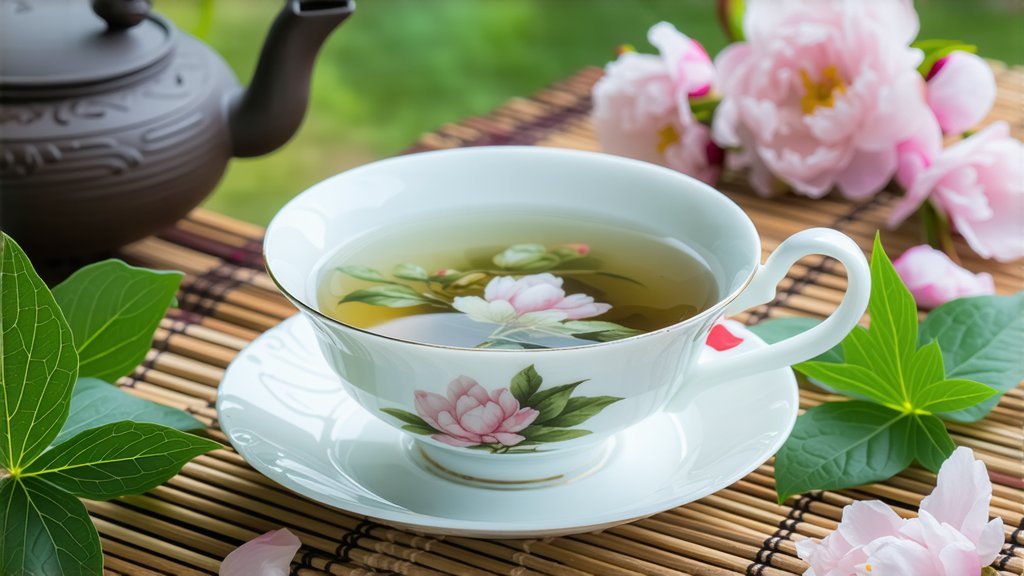
In the vast and diverse landscape of Chinese tea culture, few varieties captivate the senses and intrigue the mind as profoundly as the White Tea Peony (Bai Mudan), a gem hailing from the misty mountains of Fujian Province. This exquisite tea, often referred to as "Bai Mao Yin Zhen" or "White Fur Silver Needle," stands as a testament to the delicate artistry and profound respect for nature that characterizes Chinese tea making. As we embark on this journey, let us unravel the history, delve into its unique varieties, explore the intricate process of its creation, and discover the nuanced art of appreciating this enigmatic brew.
A Glimpse into History
The origins of White Tea Peony are shrouded in the mists of time, with tales tracing back to the Tang Dynasty (618-907 AD). It is believed that the tea was discovered accidentally when tea farmers left certain leaves to wither under the sun, only to find them transforming into a unique, pale infusion. Over centuries, this method evolved, refining the craft into what we now recognize as one of the most revered teas in China. Its name, 'Peony,' reflects not only the delicate beauty of the bloom but also the tea's own elegance and subtlety.
Varieties within the Species
While White Tea Peony itself is a distinct category, it encompasses variations based on采摘 standards (picking standards) and processing techniques. The two primary types are Shou Mei (Premium Grade) and Gong Mei (Royal Grade). Shou Mei features longer, more mature leaves and buds, offering a robust yet refined flavor profile, while Gong Mei comprises younger leaves and buds, resulting in a lighter, more ethereal taste. Both share the characteristic downy white hairs that give the tea its name.
The Art of Craftsmanship
The magic of White Tea Peony lies in its minimalistic yet meticulous production process, which involves just a handful of steps designed to preserve the natural essence of the tea leaves.
-
Plucking: Only the top two or three leaves and a bud are handpicked during early spring when the plant's growth is at its prime. This ensures the freshest and most tender parts are used.
-
Withering: Unlike other teas that undergo immediate heating, White Tea Peony undergoes a slow withering process, often spread thinly on bamboo mats under the gentle sun or in well-ventilated rooms. This step can take up to 72 hours, allowing enzymes to break down complex compounds and develop the tea's distinctive flavor.
-
Drying: After withering, the leaves are gently baked or sun-dried to remove any remaining moisture, solidifying their flavor and aroma. This low-temperature drying preserves the tea's inherent qualities.
Sensory Exploration: The Art of Appreciation
To truly appreciate White Tea Peony is to engage in a multisensory experience that transcends mere consumption. Here's how to embark on this journey:
-
Visual Appreciation: Observe the dry leaves, admiring their silvery-white appearance interspersed with hints of green. When steeped, they unfurl gracefully, revealing their full, leafy form.
-
Aroma: Bring the cup close to your nose and inhale deeply. Note the subtle floral notes, often reminiscent of peonies or chrysanthemums, mingled with hints of fresh hay and sweet fruits.
-
Taste: Take a slow sip, allowing the liquid to coat your palate. The initial taste may be light and slightly sweet, gradually unfolding into layers of complexity—a harmonious blend of minerality, vegetal undertones, and a whisper of fruitiness.
-
Mouthfeel: Pay attention to the texture; White Tea Peony is known for its smooth, almost silky mouthfeel, devoid of any astringency or bitterness.
-
Aftertaste: Savor the lingering aftertaste, which should be clean, refreshing, and subtly sweet, echoing the tea's delicate nature.
In conclusion, the White Tea Peony stands as a paragon of simplicity and sophistication within the realm of Chinese teas. Its history whispers tales of ancient discovery, its varieties offer a spectrum of flavors, and its craftsmanship showcases humanity's ability to harness nature's gifts with minimal intervention. To imbibe a cup of White Tea Peony is not merely to drink but to partake in a tradition that spans millennia, a quiet moment of reflection amidst the chaos of modern life. As you raise your cup, remember that each sip carries with it the essence of Fujian's mountains, the hands of skilled artisans, and a legacy that continues to enchant tea lovers around the globe.